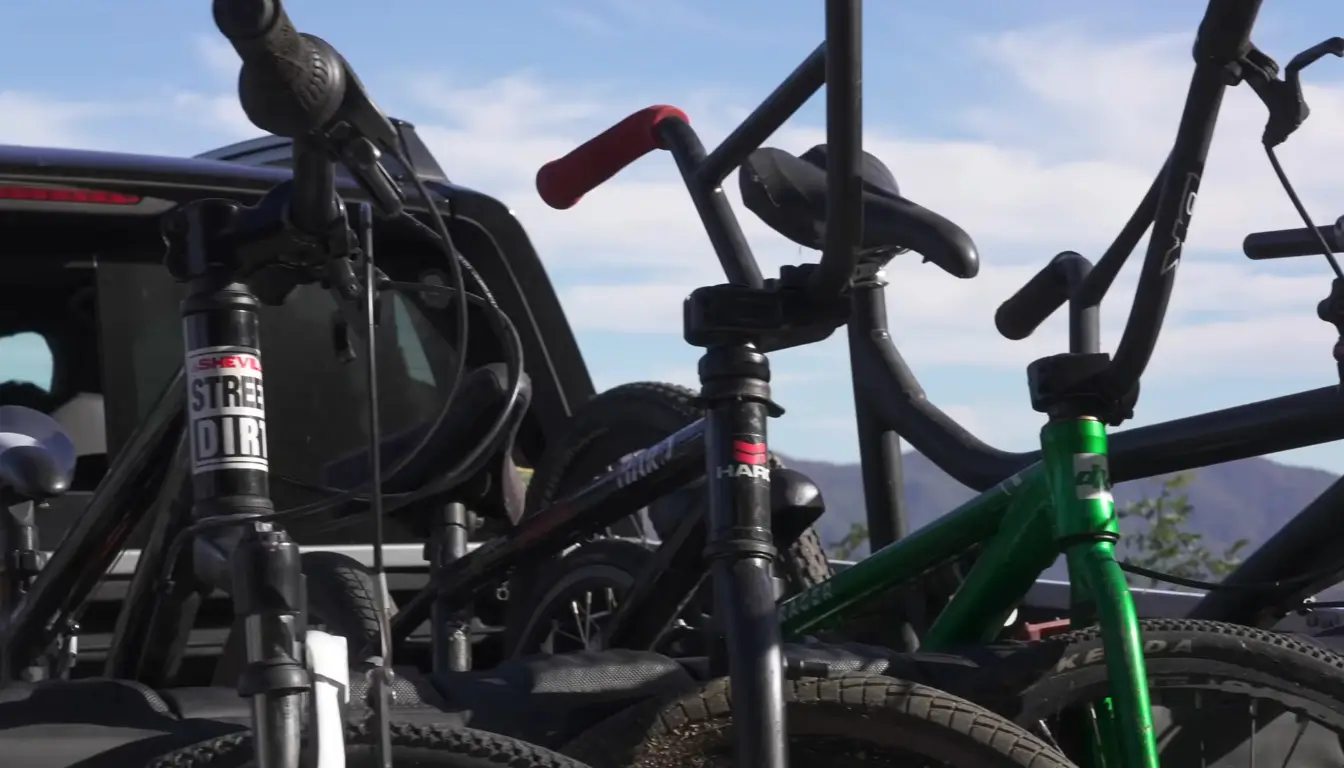The experiences of riding bicycles can vary with different types and sizes of bikes. However, size is the primary factor in selecting the most suitable one. When a bike size isn’t matched your body, then your riding experience will be utterly dissatisfactory.
Bikes come in various sizes, and matching those to all of your preferences can be tough. You may ask: for what size person is the common 24” wheel bike – as referred to as the wheel diameter – compatible? Well, it is manufactured mainly for children, teenagers, and most women, and has enough features for comfort and safe riding.
The 24” size bike is well-suited for children and even teenagers, and its lightweight helps them to handle the bike with ease and safety. Its smooth design is ideal for comfortable riding even on irregular surfaces. The majority of ladies are short with small size arms and legs, and since the 24” bike is made for people with small build bodies, it is quite comfortable for them to ride on. This bike is also attuned for men with small physiques.
Before you decide to purchase any bicycle, you also ought to determine mostly where and for what purpose you will use it as well as consider what advantages you are looking for. You need to correctly match your body build with the required bike, as may be available in the market. Let us guide you to get clear about whether the 24” bike is befitting for you.
The significance of bicycle size
A bike’s 24” size has two implications. Firstly, it refers to the wheel diameter. Secondly, it means the 24-inch size of the bike’s frame as measured from the mid-point of the pedals to the clamp of the seat, which is a common frame size found in the market.
With any extra small or too-large bike, you won’t feel at ease, meaning that only a compatible bicycle size will provide you with the required comfort and efficiency while riding.
Also, the well-suited bike size will help you maintain your proper body posture. Uncomfortable posture during bike rides can eventually lead to adverse back pain. For instance, riding an extra-large bike forcibly stretches the back causing back pain, while a too-small bike, alongside causing fatigue, will make you suffer pain not only in the back, but also shoulders, wrists, and knees.
Bike size is also linked to the safety of riding. Improper size bikes can make riding quite shaky with likely loss of control and risky movements. Bulky bikes can make timely braking tough.
For bike racing, selecting the correct bike size is essential. Odd-sized bikes produce uneasy feelings and/or tiredness while riding and will never allow you to get up to anywhere near the desired speed. Only a befitting bike size can let you maintain the correct posture for gaining top speed through efficient energetic actions.
Matching the bicycle size
To determine the bike size suitable for you, first, get your height measured correctly. After that, stand upright on the floor with shoes on and nearly touching, and then take vertical measurements from the floor to your crotch to get your inseam size. The 24” bike size will be well suited for you if your height is between 4’5” and 5’4” and the inseam is between 2’0” and 2’4”. Normally, (0.70 X inseam length) will be the frame size of your required road bike, while (0.685 X inseam length) will be the measurement of the frame size of your mountain bike for yourself.
The 24” wheel bike size helps children maintain their proper posture to keep on riding for a longer time. Besides, 24” bikes mostly come with seats that are 2-3 inches higher than children’s inseam length, due to which their knees can move more flexibly with no tension.
Also, consider how well bike frame sizes can suit you – when the arm span is greater than the height, choose a larger frame bike, but when it is shorter, pick a smaller one. The reach for handlebars on a larger bike is longer. So a larger frame bike will feel much more comfortable for those with longer arms.Main features of bike wheels
Bike wheels impact the cycling experience to a sizeable extent. The wheels primarily make you feel the vibrations based on variations on the surfaces you ride on. They transfer your pedaling efforts onto the road. The tread of bike wheels can influence both the speed and the feel of riding. Lighter wheels ensure faster and more flexible maneuvering. For a safe and satisfactory riding experience, wheels that are proper in all respects are essential. It is also important to select wheels that match your riding style.
- Bicycle tire widths usually measure 7/10 to 1 inch with minimum resistance from the ground ensured.
- Tire sizes mostly depend on the anticipated use. Tires with large widths and enhanced traction are often used for tough rides.
- A smoothly-running spine set on every tire prevents excess friction with the riding surface, and this allows increased speed with enhanced tire longevity.
- The tires and rims on bike wheels are made aerodynamic, long-lasting, and lightweight to ensure optimum performance during speedy rides.
- Every bike wheel is linked with the shaft through a set of 36 metallic spokes that are fixed in an orderly way for a sturdy connection of the wheel to the axle.
- Tires with narrow treads allow cyclists to ride smoothly and quickly on flatter terrains. These are mainly fitted on mountain bikes.
- The wheel sizes on cruiser bikes and junior mountain bikes are typically 24”. Some riders with heavy body build who love the 20” wheel bike versatility prefer this size too.
Types of available 24” wheel bikes

The main categories of 24” size bikes available in the market include:
- Road bike: A 24” road bike can be the best choice for children, especially for casual rides. This bike is well-suited even during any adult’s day-to-day regular commutes. For having handlebars set low and a long saddle, this bike can be comfortable. Compared to the larger 26” or 29” wheel bikes, this bike cannot provide the topmost suspension.
- Mountain bike: 24” wheels on a mountain bike is the standard for children, especially 7-11 years old. It is a robust, durable, and comfortable bike. This type is neither too large nor too small, which can lead to fatigue. Children can ride this bicycle with confidence.
- Hybrid bike: This bike combines the features of a mountain bike and a road bike. It doesn’t need large wheels since it provides a comfortable structure. When 24” wheels are installed in it, it can run quite well. This bike is versatile and well-adapted for children and short people.
Safe, efficient, and comfortable bike riding
For efficient and safe riding with comfort, the bike saddle and its height must ensure maximum ease. While sitting on the saddle, check that both of your feet can touch the ground freely. The saddle height defines to what extent your legs will get bent when cycling. Persons with excess inseam length will have difficulty riding this bike.
Although it is okay to lean ahead with the back curved slightly when riding, avoid drooping your pelvis at the saddle. You need to keep the practice of turning your hips during your ride.
When a bicycle frame is extra small, it makes the ride feel jittery and unsteady at faster speeds, forcing the rider to get cramped and uncomfortable on longer journeys with an abnormal and unsafe hold on the bike.
It is worth knowing that even when you pedal harder during a short-duration ride, you will recover faster compared to any long ride.
Questions & Answers
1. Is it practicable to fit 24” wheels as a replacement on a bike with a 26” frame?
Fitting 24” wheels on any 26” frame bicycle can be a feasible solution as an adjustment for any person’s mismatched height and/or weight. Also suppose, your inseam length and height are just right for the 26” frame bike, but you prefer smaller wheels. You may then fix 24” wheels on it. This is also a means of lowering the bike’s height for a more comfortable ride if needed.
2. Can we get front suspension fitting on 24” bikes?
Front suspension fittings for the 24” bicycles are not the standard, so that’s not common.
3. Can I carry a 24” bike in a car?
Yes. Most cars, even smaller ones such as hatchbacks or city cars, can provide space for a bike if the length doesn’t exceed 69”. Also note that the 24” or even a 29” bike can easily fit into a car without removing any parts of the bicycle.
4. What features distinguish the 24” bikes?
Their distinguishing features are:
# Narrow handlebars that are usually proportionate to the bike’s frame size. The smallest handlebar is 40 cm long, while larger bikes have 44 cm or longer ones.
# Short saddle tubes for a low sitting position that is optimum for short inseam lengths of children, helping them to operate the pedals efficiently. Taller persons can adjust the saddle for powerful pedaling.
# Lightweight and solid-built frames that don’t feel hard to ride all around. It suits those with lower body weight.
# Small-sized pedals that are well-suited for low effort and are less stressful, and this can be suitable even for racing and lengthy rides.
# Generally meant for those with a height of 5’4” or less (taller persons can get stressed cycling on these because of their larger bodies and legs).
5. How safe is bicycle riding?
Statistics show that bicycle riders are significant sufferers when we consider road accidents. In the USA, each year cyclists become the victims of nearly 2 percent of all accidents related to vehicles.
6. Can we make out whether a 24-inch bicycle is a compatible size for a person just by taking a look at him/her?
No. Although recommended ranges of height and weight for various sizes of wheels and frames exist, it is always best to select the appropriate bike for anyone by trying or test-riding several bikes before finally picking the most appropriate one. Besides, an important consideration is that any investment in this form of transport and fun experience has to serve you well for a long duration.
7. What’s the uppermost weight limit that a bike can carry?
For most bikes, the maximum weight holding limit is around 275 to 300 lbs. However, some bicycle models can carry up to even 550 lbs. but they need to have robust frames and wide enough gear ratios for such capacities. We can say that any specific bike can carry the maximum weight based only on the materials used in manufacturing the bike’s frame and tires. Note that wider bikes or cruiser bikes can hold greater amounts of weight.
Conclusion
Sometimes, deciding on the best mode of regular or frequent travel can be a challenge. If you settle on using a bike, choosing the most suitable one means considering the types of paths, distances, and how often you’ll be riding—as well as your overall purpose. Think about how you’ll feel on the bike. Consider the pros and cons of all the different models available to ensure a satisfying experience.
If you’re wondering about a 24 inch bike for what size person, it’s important to know that this size is generally best suited for riders between 4’5” and 5’4” tall. However, comfort and fit can vary, so it’s a wise idea to test ride several bikes before making a decision. Once you’ve found the right fit, make the most of it by prioritizing comfort and efficiency. Keep riding regularly for enjoyable, smooth experiences—and always stay alert and committed to safe riding practices.

I am Ryan Ford, a mountain biking enthusiast who loves to explore the outdoors. I also like to go on adventures with friends and anything else that involves being outside. I love my bike because it gets me out of the house and gives me an opportunity to enjoy nature.

